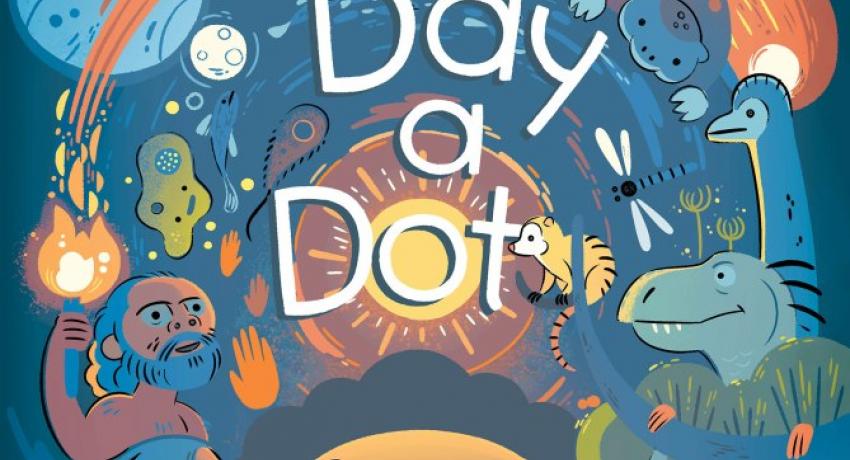You don't often get reviews this nice, especially from Kirkus *cough cough*. In particular, this was written by Julie Danielson, who if you don't know her, is worth following. She has the great children's book blog Seven Impossible Thing Before Breakfast.
Anyway, here's the review:
"Author Madeleine L’Engle once wrote that, if she has something complex to say, something too difficult for adults to accept, then she writes it in a book for children. She added, “Children still haven’t closed themselves off with fear of the unknown, fear of revolution, or the scramble for security.” I think the best children’s book authors know this, including the authors and illustrators of the two books here today.
Ian Lendler’s One Day a Dot: The Story of You, the Universe, and Everything, illustrated by Shelli Paroline and Braden Lamb, is a picture book attempting, in part, to capture for preschool readers nothing less than the Big Bang and the line it follows to modern-day existence. Readers follow the formation of the stars, planets, and universe as a whole to first life; to creatures on water and land; to humans; to civilization; to technology; to now. Using simple language and concepts, Lendler makes accessible to the youngest of readers this story of life, and the illustrators use repeated circular patterns (it all begins with a dot, after all) and busy, but never overwhelming, compositions to animate it.
But in my mind the beating heart of this book is the question it poses at its close, one of wonder and mystery. And it is one that it just so happens I was trying to articulate to my own children recently—and failing spectacularly in doing so. For this reason, I may have yawped a little happy yawp when I read Lendler’s book for the first time.
By “mystery” I mean this: We know about the Big Bang. (Thanks, observational astronomy and particle physics.) We know how it all began. But what was before that? What is beyond the outer edges of it? Could there be something? You can easily imagine how I rambled incoherently as I tried to express this question to my children. I’m no Plato. Celestial mechanics are not my strong point. (As a child, I used to wonder about the same thing, trying to imagine if there were, anywhere, an end to the big, wide universe.)
But here’s what Lendler does that happens to capture the metaphysical ramblings bouncing around haphazardly in my brain: He opens the book with “One day a dot appeared.” After that, the creation of life ensues — nearly 40 pages of it, as described above. But on the final page? We see an illustration of a child drawing a dot on paper, and we read that humans have gotten to the point where they are pretty clever, but “there was one question that they could not answer … Where did that first dot come from?” The end.
BOOM. Yes. That is what I meant but couldn’t say. (Thanks, Lendler.) It gives me chills to read, and it may very well do the same for the children with whom you share this book. Most definitely, it will be a conversation-starter. One day, a dot. The next day, captivating cosmological conversations."
- Log in to post comments

